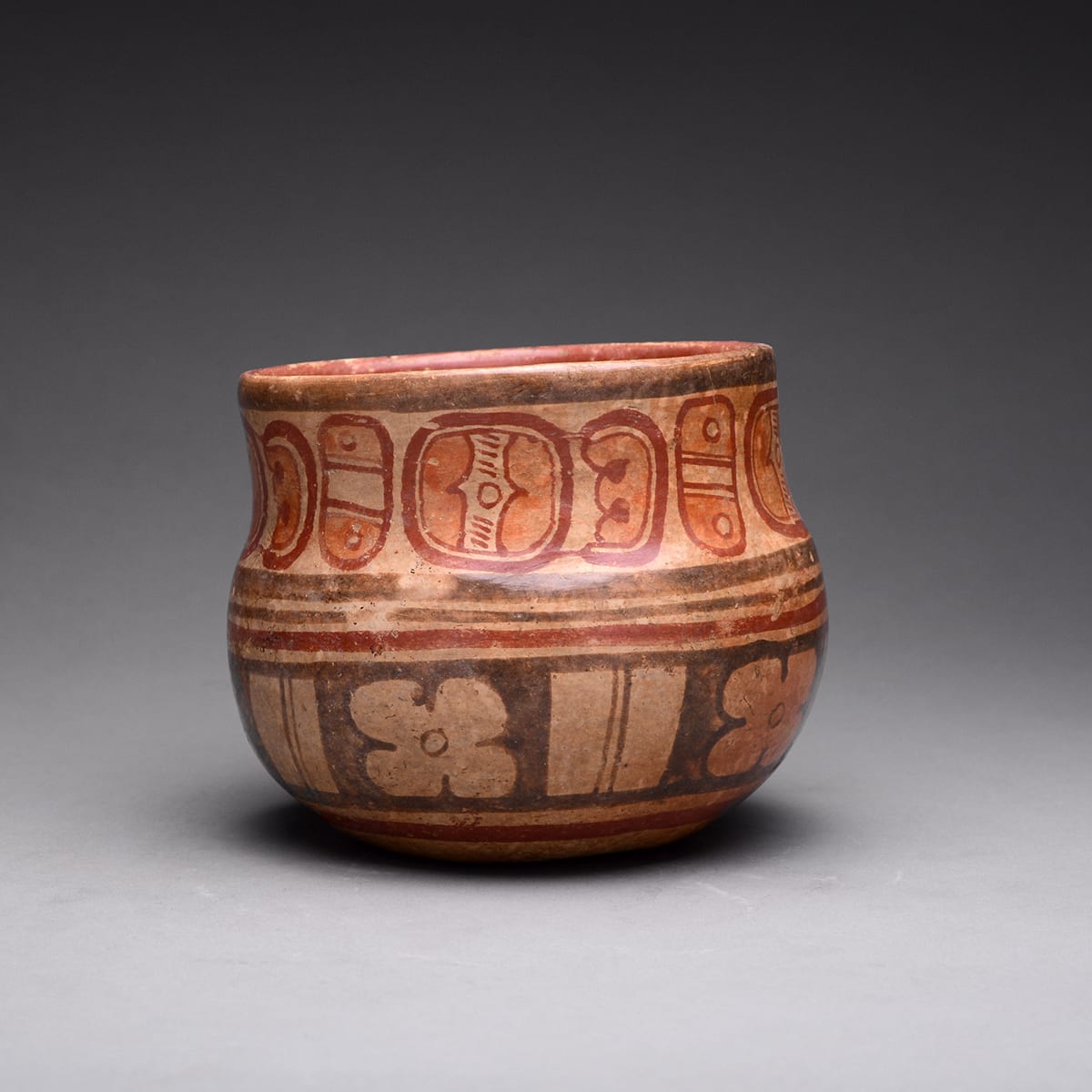Mayan Polychrome Bowl, 500 CE - 900 CE
Terracotta
height 14.6 cm
height 5 3/4 in
height 5 3/4 in
PF.5849
Further images
The Ancient Maya were undoubtedly the masters of ceramics in Mesoamerica. Few cultures anywhere in the world can compare to the level of sophisticated artistry of the paintings and elegant...
The Ancient Maya were undoubtedly the masters of ceramics in Mesoamerica. Few cultures anywhere in the world can compare to the level of sophisticated artistry of the paintings and elegant forms of the pottery that the Maya achieved. However, when one considers that all Mayan vessels were potted without the aid of a potter’s wheel, their achievement becomes even that much more stunning. This vessel is a perfect example of Mayan ceramics. When we hold the bowl in our hands, we feel the subtle bumps and indentations that are the telltale signs of handcraftsmanship. The simplicity of the form is complemented by the reserved decoration. By far the most complex motif is the row of glyphs painted in orange and red repeated along the neck of the vessel. Otherwise, the decoration mostly consists of red and black bands. The body is adorned with a band of alternating flowers shapes and squares all outlined in black. This vessel reveals a hidden complexity inherent in the fabrication that is masked by the simplicity of the reserved design. While this vessel appears to be a beautiful example of functional pottery, there was a greater purpose for this bowl than the transportation and containment of precious liquids. Discovered in a tomb, buried alongside a deceased ruler or high-ranking dignitary, this vase was as essential in the afterlife as it was in our world.





